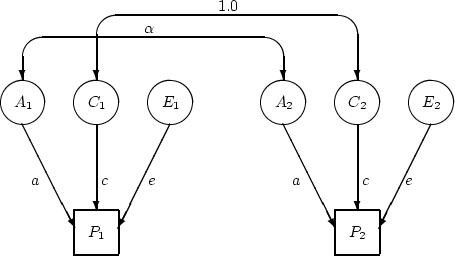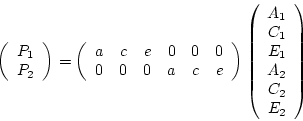 and
and 
Details of specifying and estimating this basic univariate model are given in Chapter 6. One of the interesting assumptions of this basic ACE model is that the siblings' or twins' phenotypes have no influence on each other. This assumption may well be true of height or finger print ridge count, but is it necessarily true for a behavior like smoking, a psychiatric condition like depression, delinquent behavior in children or even an anthropometric measure like the body mass index? We should not, in general, assume a priori that a source of variation is absent, especially when an empirical test of the assumption may be readily performed. However, we may as well recognize from the onset that evidence for social interactions or sibling effects is pretty scarce. The fact is that usually one form or another of the basic univariate model adequately describes a twin or family data set, within the power of the study. This tells us that there will not be evidence of significant social interactions since, were such effects substantial, they would lead to failure of basic univariate models. Nevertheless, this extension of the basic models is of considerable theoretical interest and studying its outcome on the expectations derived from the models can provide insight into the nature and results of social influences. The applications to bivariate and multivariate causal modeling are perhaps even more intriguing and will be taken up in the next chapter.